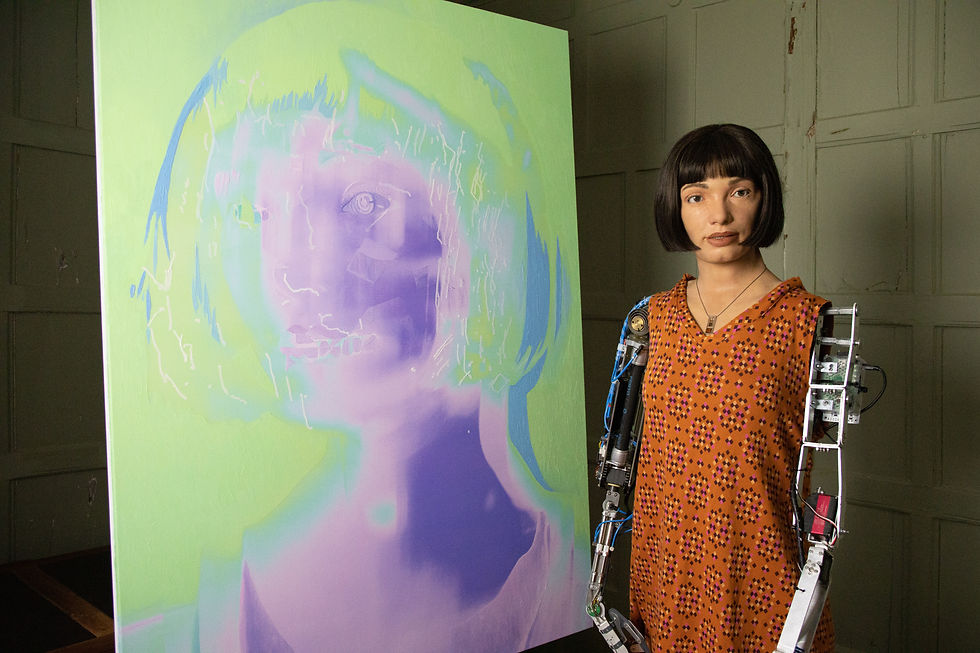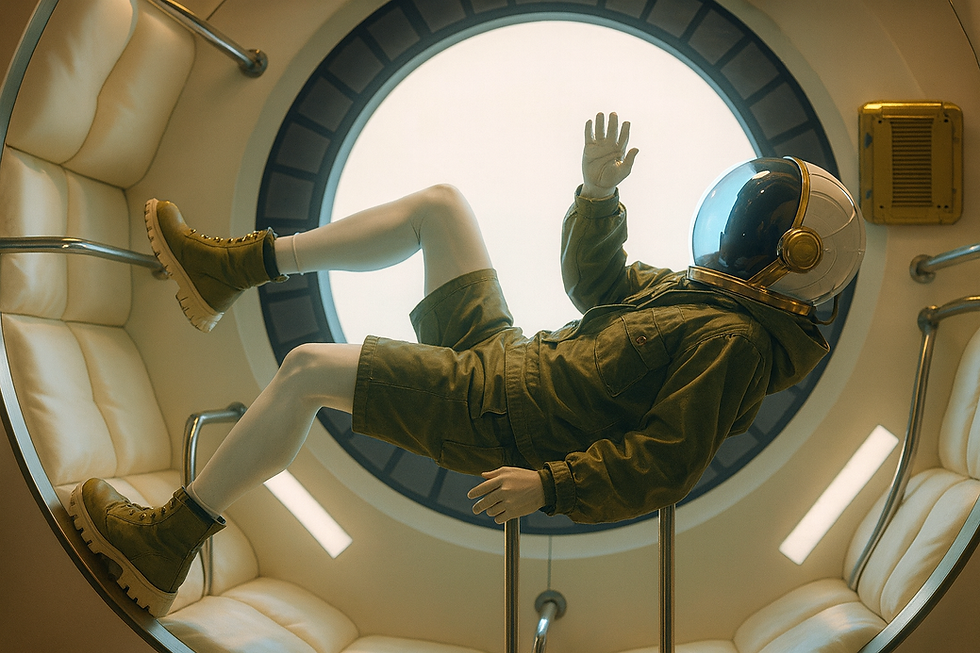AI vs The Mind : Meet Ai-Da, the World's First Artist Robot
- CEO Collar

- Jul 24
- 2 min read
Who is Ai-Da?
Ai-Da is the world’s first ultra-realistic humanoid robot artist—named after Ada Lovelace, the 19th-century mathematician considered the first computer programmer. Designed by a team of robotics engineers at Engineered Arts and developed in collaboration with Oxford and Leeds University researchers, Ai-Da is more than a novelty. She’s equipped with sophisticated AI software, facial recognition tech, and robotic arms capable of precise, expressive movement.

Her eerily human-like face, complete with blinking eyes and subtle facial gestures, conceals the complex machinery that powers her creativity. With cameras in her eyes and machine-learning algorithms interpreting the visual data, Ai-Da can sketch what she sees in front of her and paint in a variety of artistic styles. Unlike a printer that replicates pixels, Ai-Da interprets form, light, and space—producing artworks that range from semi-abstract expressionism to digital-surrealist hybrids.
Can AI Be Creative?
That’s the million-dollar (or maybe gallery-ticket-price) question. Ai-Da’s paintings have been compared to impressionism and cubism, not because she mimics the style on command, but because her algorithms are trained on thousands of images and art histories. Her poetry, too—generated after being fed massive libraries of human-written verse—often surprises with its coherence, metaphors, and even moments of melancholy.
But is it creativity if there's no soul behind it? Critics say no. Creativity, they argue, is deeply rooted in human emotion, intuition, and lived experience—things AI fundamentally lacks. Still, if a viewer stands before an Ai-Da piece and feels moved, confused, or inspired, doesn’t that emotional response legitimize the artwork, regardless of its maker?
The Future of AI Art
Ai-Da has already made headlines across the globe. Her works have been exhibited at the Victoria and Albert Museum, the Design Museum in London, and the 59th Venice Biennale. She’s sold paintings for over $1 million, published poetry collections, and even addressed the British House of Lords and appeared at TEDx talks, discussing the implications of AI on creative industries.
Her creators stress that Ai-Da isn’t trying to replace human artists, but rather provoke conversations around what it means to create, to feel, and to innovate. In a world where digital art, NFTs, and generative design are reshaping visual culture, Ai-Da serves as a living question mark—challenging traditional notions of authorship, authenticity, and emotional expression in art.
One thing’s for sure: AI isn’t just making art—it’s making us rethink why we make it in the first place.







Comments